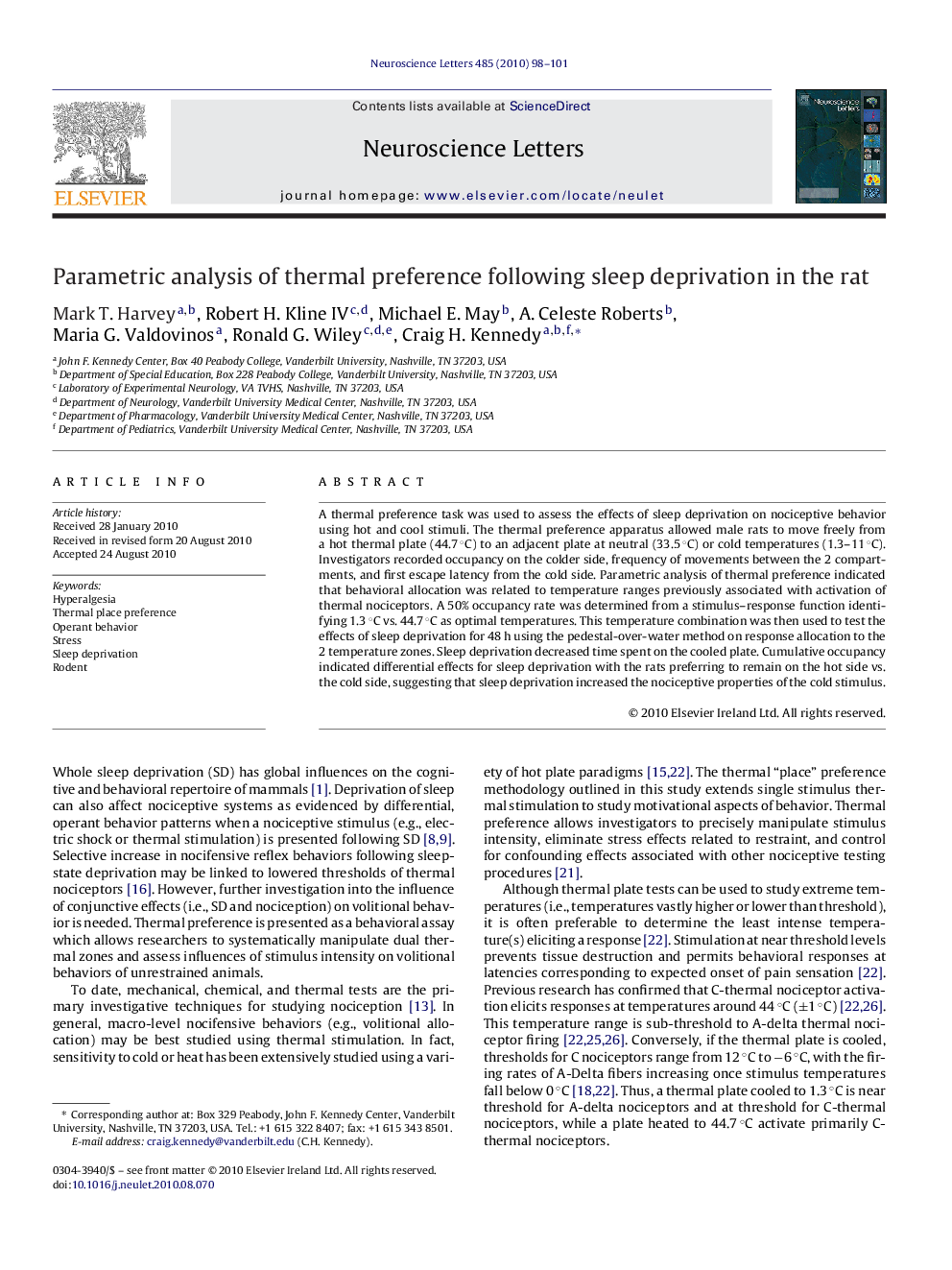| Article ID | Journal | Published Year | Pages | File Type |
|---|---|---|---|---|
| 4345738 | Neuroscience Letters | 2010 | 4 Pages |
A thermal preference task was used to assess the effects of sleep deprivation on nociceptive behavior using hot and cool stimuli. The thermal preference apparatus allowed male rats to move freely from a hot thermal plate (44.7 °C) to an adjacent plate at neutral (33.5 °C) or cold temperatures (1.3–11 °C). Investigators recorded occupancy on the colder side, frequency of movements between the 2 compartments, and first escape latency from the cold side. Parametric analysis of thermal preference indicated that behavioral allocation was related to temperature ranges previously associated with activation of thermal nociceptors. A 50% occupancy rate was determined from a stimulus–response function identifying 1.3 °C vs. 44.7 °C as optimal temperatures. This temperature combination was then used to test the effects of sleep deprivation for 48 h using the pedestal-over-water method on response allocation to the 2 temperature zones. Sleep deprivation decreased time spent on the cooled plate. Cumulative occupancy indicated differential effects for sleep deprivation with the rats preferring to remain on the hot side vs. the cold side, suggesting that sleep deprivation increased the nociceptive properties of the cold stimulus.
Research highlights▶ A thermal place preference task was developed that allows rats to chose between floors of differing temperatures. ▶ A parametric temperature analysis showed that 50% response allocation to each thermal plate was achieved with a 1.3 °C vs. 44.7 °C combination. ▶ When rats were sleep deprived for 48 h, their preference shifted to the 44.7 °C thermal plate.
